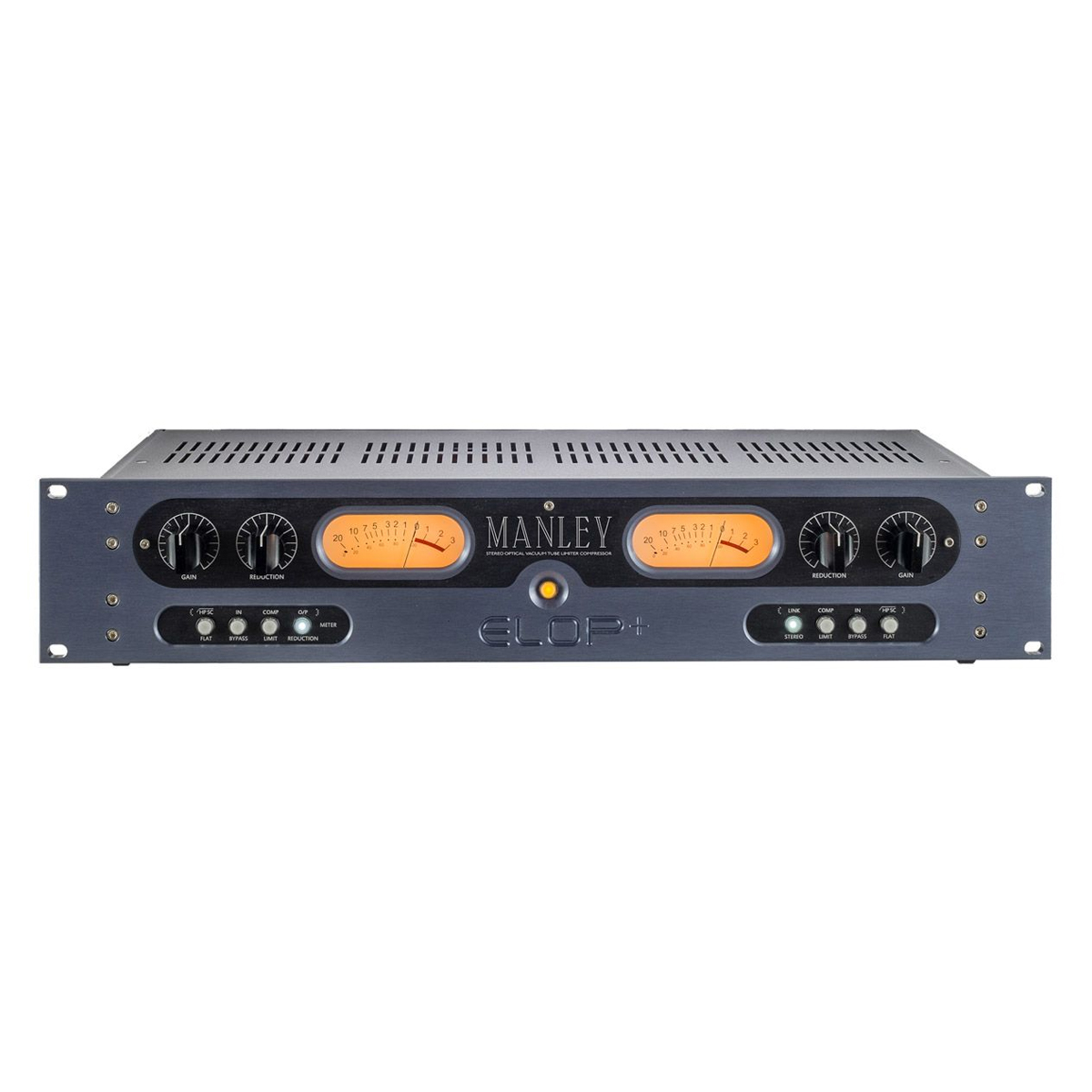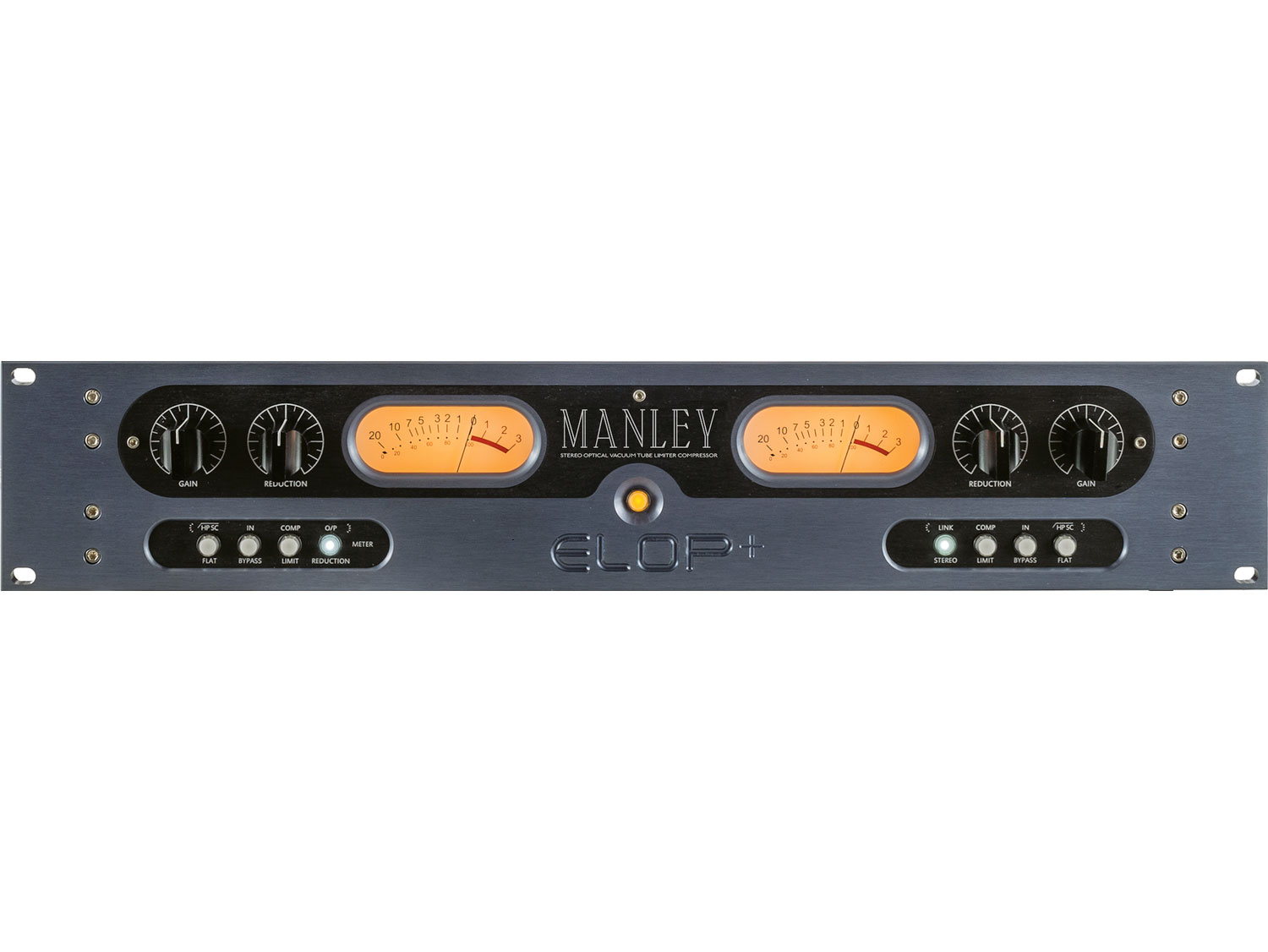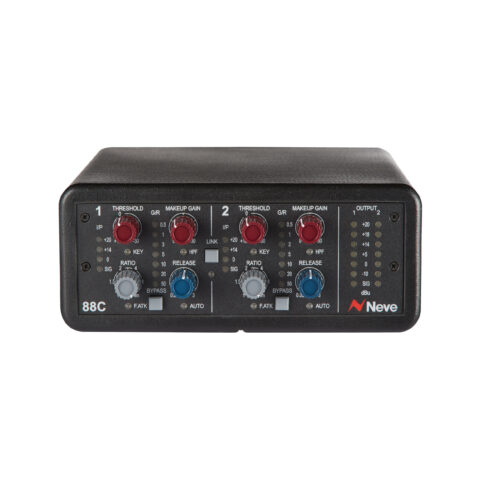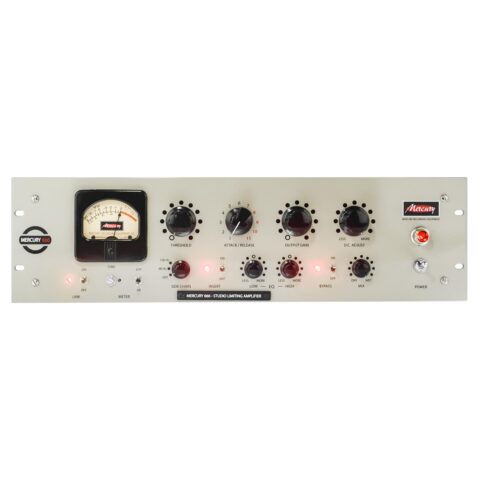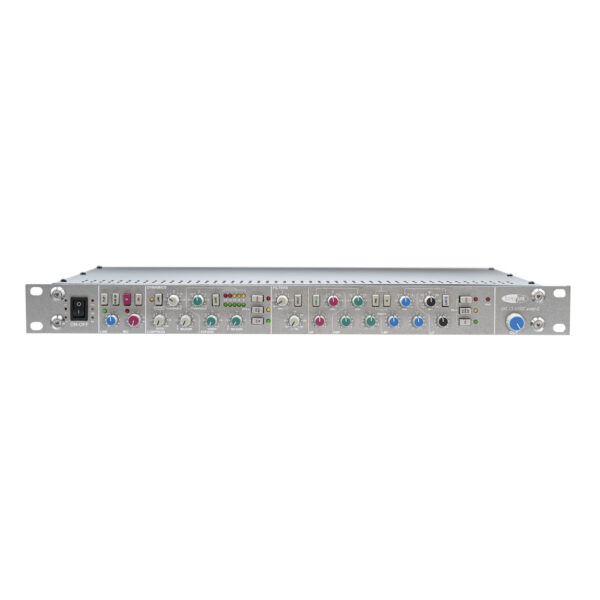Manley ELOP+ stereo electro-optical limiter
How Do You Improve on a Classic?
Since the early 1990’s, the Manley ELOP® stereo electro-optical limiter has been a tracking hero, effortlessly controlling dynamics on countless records around the globe, delivering the coveted classic, all-tube sound that Manley Labs is known for. So how do you improve on something this good?
Well, for starters, Manley Labs have now added a 3:1 compression ratio feature which opens up the doors to greater versatility, especially for 2-buss applications. The Manley 2016 ELOP+ has been completely re-engineered from the ground-up, beginning with Manley’s amazing modern high voltage switching power supply purpose-designed for their vacuum tube audio circuits. With careful reference to their sonic past, Manley have deployed their highest performance vacuum tube line amplifier and White Follower output stage in this new version all housed in a build-efficient chassis behind a drop-dead gorgeous precision-CNC-milled faceplate, all proudly made in America. The new Manley ELOP+ is everything you love about Manley’s legendary ELOP, plus!
The Manley ELOP+ Includes:
- 1 x Manley ELOP+ Stereo Limiter Compressor
- 1 x Manley ELOP+ Owner’s Manual
- 1 x IEC Power Cable
- 1 x Warranty Registration Card
- 1 x Warranty Statement
Some Manley ELOP+ Advanced Tricks:
Here are a few tricks that are not really for rookies. They come from guys doing major records for years and won’t work unless you’ve mastered the basics. In other words if we gave you a Strat and Marshall it won’t make you another Jimi. Also we don’t suggest that you try these out while paying big-time studio rates – they may not be easy to get right at first.
Trick#1
Each compressor or device in the chain has certain flavours and characteristics and with experience we grab the ones we like because of the sound – not because “it is a compressor”. The idea is to use several cool compressors in a chain getting flavours from each depending on how much GR (gain reduction) is used in each and how hard they are driven. It’s this second concept that can be tricky. How far to turn up each Make-up Gain to overdrive or not overdrive the next unit – and still not get flooded with noise when the music stops. You can chain the two channels of the ELOP+ and turn up the make-up of the first channel. This works best with classic discrete and tube units that have inherently high headroom. You would usually not ry this with IC-based or 500 series units. The finesse comes from which order they are patched. See how long it might take to get best results. Trick#2
This one is easier, but also requires serious listening. Rather than just “inserting” a limiter, try driving the limiter from the tape patch (pre EQ), returning it to a spare fader and mixing it with the original. So what is so tricky? How you EQ and automate and add effects to these channels. You can also have fun phase reversing one of the channels. You get cancellation but only at a certain level. It is sort of like gating, but different – it is a way of controlling the “ambiance”.
Trick#3
Using one track to “duck” another. This may work better with compressors with attack and release and ratio controls if you are thinking drums. Bass and vocal is very cool with the ELOP+. Set it up like trick#2 with bass in one channel and vocal in the other (in LINK mode) and experiment with each threshold. Two guitar tracks also work here sometimes. Obviously, we pull out this trick when two tracks are stepping on each other and EQ isn’t making enough room for clarity.
Trick#4
Drive the compressor from an AUX send and return it to a channel. Once you have some limiting, carefully turn up that aux send on the return channel to “feed back” into the limiter. Watch out for real howling feedback and over the top limiting. If you are lucky it won’t scream during the quiet parts. The key is balancing the faders, track auxes, the return auxes, the thresholds, and make-up gains. The technique can get pretty crunchy and wild. Works best with not-so-clean compressors, but is interesting with the ELOP+.
Trick#5
This one is a way to get a very good single channel De-esser from the ELOP+ or other compressor good enough for lead vocals. Split the Insert send of the vocal to the ELOP+ and to a spare channel. EQ the snot out of that second channel boosting the 5 or 6 kHz band and chopping everything below that. Use the insert from this channel to drive the other channel of the ELOP+, but it is unlikely that you want this fader up. Set the ELOP+ to Link. The threshold of the first channel sets compression and the second channel sets de-essing. Unlike some de-essers it will not chop highs, but reduce wide-band which is less obvious. The only drag is that the release is a little slow. Remember good de-essing is not to remove esses – the idea is to reduce esses and make them natural sounding. BTW if you need to de-ess, you might want to rethink your choice of gear. There are 3 main reasons we get horrible esses:
1) a gap in the singer’s teeth or just a strange voice
2) too much or wrongly chosen EQ, or,
3) gear that distorts the highs.
If the cause is “1”, try sticking some dental wax in the gap. No joke! If the cause is “2” then we can tell you some EQs allow one to boost highs with less problems with the esses or you might try boosting a higher freq, or less during tracking. If it is “3” you may want a better mic or sell off some of that cheap IC gear that seems to be distorting the top in a way that you don’t like. Actually we have heard some pretty expensive gear – both tube and solid state – that has this particularly ugly distortion. If in doubt, try some tough percussion through it like shakers or tambourines, and see how they sound…
Features:
- 10:1 Limiter and 3:1 Compressor ratios
- All-tube audio path uses 5751 and 6922 dual triodes
- Balanced Manley IRON® transformer-coupled XLR Inputs
- XLR impedance-balanced outputs
- BYPASS switches and AUTOMUTE with warm-up delay
- Large illuminated VU meters read Gain Reduction or Output levels
- STEREO LINK
- Side-Chain High-Pass Filter
- Universal internal power supply operates worldwide 90-250V~AC 50/60Hz
